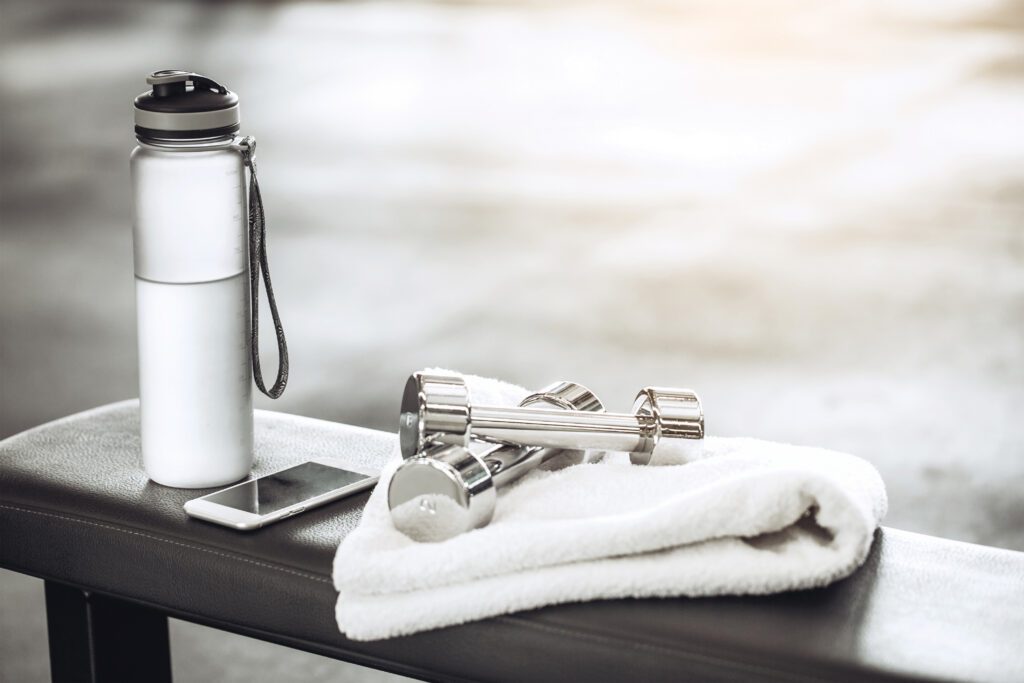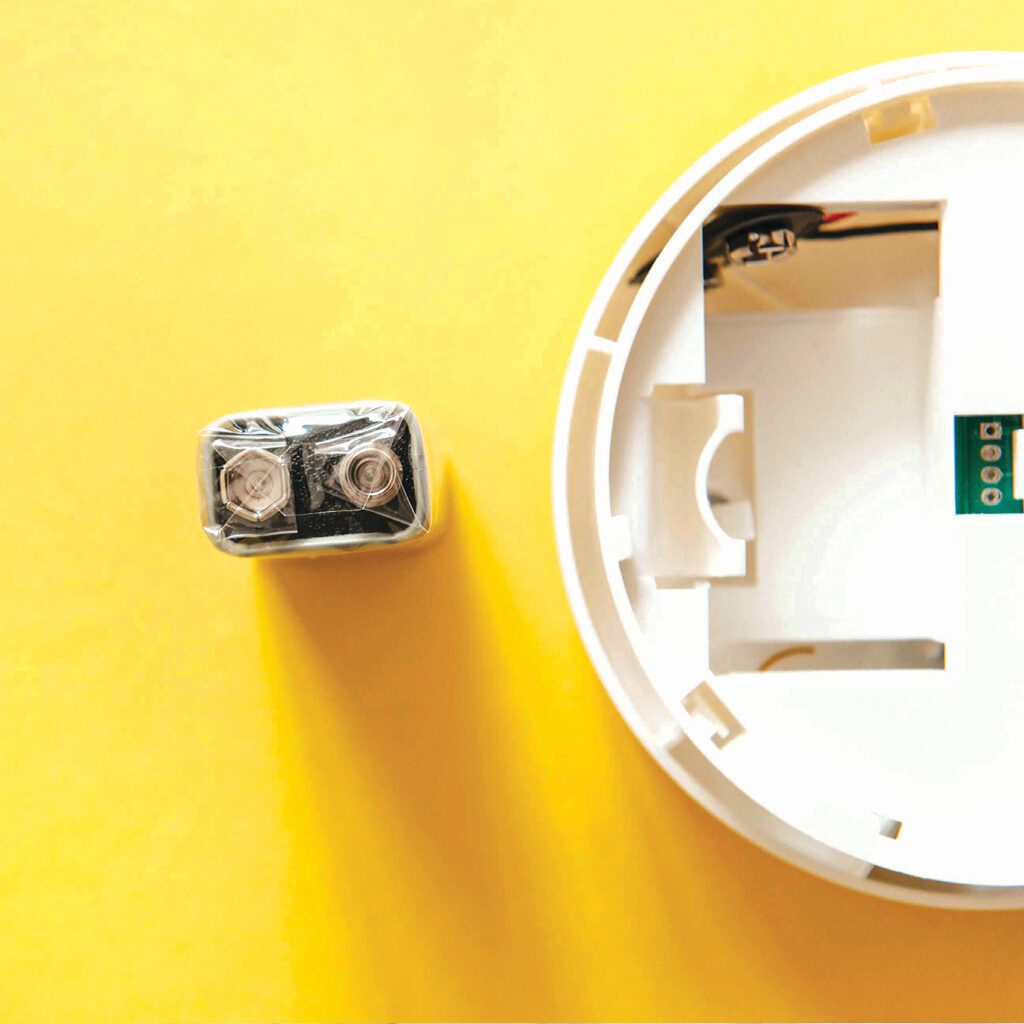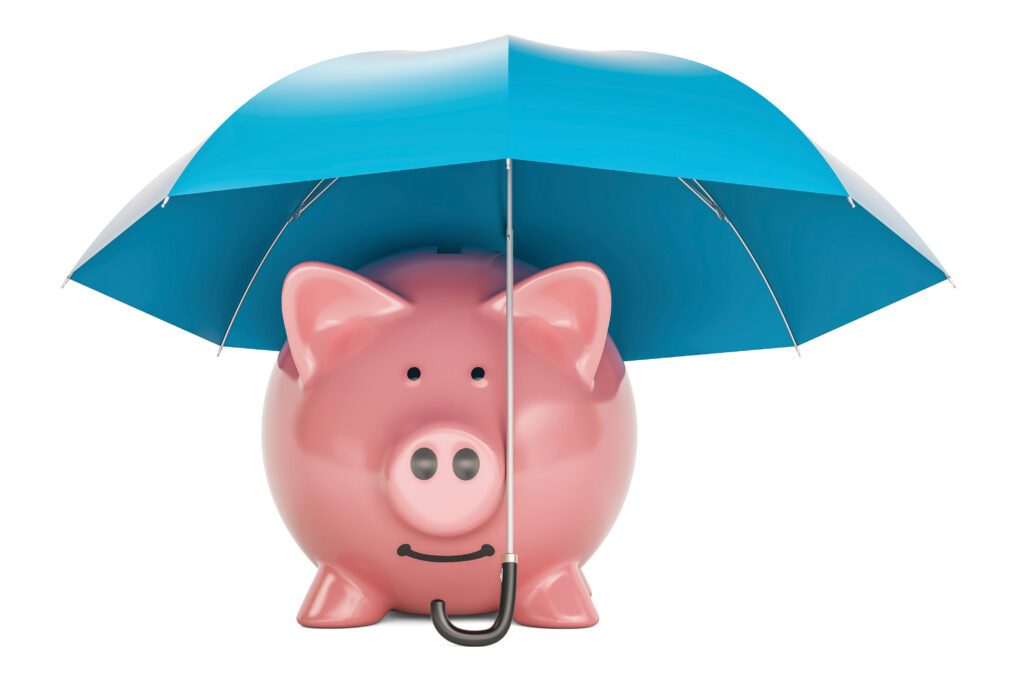For Her
5 Reasons to Get a Massage
As if you needed a reason, right? Massage therapy offers a world of benefits beyond the obvious (relaxation). Even scheduling one or two sessions a month can enhance your overall health. Here are a few benefits to consider!
1. It relieves headaches.
Certain types of pain respond well to massage therapy, including cluster headaches and migraines. By targeting the nape of the neck, the massage works to relieve that built-up pressure in your head.
2. It fights off insomnia.
A massage triggers the release of serotonin, a chemical that can help you achieve a good night’s rest.
3. It improves posture.
Massage therapy helps to loosen your muscles, allowing your body to fall into its natural and pain-free alignment.
4. It reduces soreness.
Sore after your workout? Try a massage to stimulate the blood flow and help your muscles recover.

5. It melts away stress.
Massage therapy is a powerful tool for lowering stress levels. Since stress can affect every part of your body (not just your mind), a relaxing massage session may be just the ticket to a blissful disposition!
Your Fabulous Forties
Your 40s are an important decade. You’re transitioning into those middle-age years, after all! This decade is also the time to start routinely assessing your health. To do this, stay up-to-date on all your medical exams and screenings, like:
The pelvic exam.
Yes, these are still necessary – especially if you’re sexually active. The annual exam, which takes just a few minutes, assesses your gynecological health and often includes a Pap smear, which screens for cervical cancer.
The mammogram.
This annual screening helps to detect breast cancer in its earliest stages. Additionally, all women should perform an at-home, monthly breast self-exam to check for any abnormalities.
The fasting blood sugar test.
As you age, your risk of diabetes increases. Doctors recommend a fasting blood sugar test once every three years starting at age 45 (or more frequently, depending on your risk).
The eye exam.
It’s not uncommon for 40-year-old women to develop vision-related problems like presbyopia – the inability to focus up close. Even if you’ve never worn contacts or glasses, you should start scheduling an eye exam every two years.
…And everything else!
Talk to your doctor about other important screenings including blood pressure, cholesterol, and BMI.
For Him
Gains and Germs: Staying Healthy at the Gym
The gym is a popular place come January of each year. Fitness buffs take shelter from the cold temps, while newbies strive to follow through with New Year’s resolutions. If you’re a regular at the gym this winter, check out these tips on avoiding infection and staying healthy.
1. Bring your own equipment.
In addition to your gym clothes, pack a reusable water bottle, a couple of towels, and your own workout mat for floor exercises. That way, you have total control over cleanliness.
2. Wipe down the machines – before and after use.
This one may be obvious, but it’s a lot easier said than done (especially when you’re in a rush). As a general rule, clean any surface that you’ll be touching, including handles, free weights, and screens.


3. Keep your feet covered.
Protect your feet from athlete’s foot and other unfavorable fungi by donning flip-flops in the gym shower.
4. Wash your hands.
It’s the most important step you can take to prevent the spread of germs. Always wash your hands with soap and water before leaving the gym, and try not to touch your nose, eyes, and mouth with unwashed hands.
Does Age Affect Male Fertility?
You often hear about a woman’s biological clock, but do men share a similar phenomenon? While men never stop producing semen, research suggests that age does affect male fertility – here’s how.
Semen Volume
Older men have a lower semen volume and total sperm output, as semen volume gradually declines between the ages of 20 and 80.
Sperm Motility & Morphology
Motility refers to the sperm’s ability to move properly toward a woman’s egg. One study concluded that motility decreases at a consistent rate (0.8% per year) with advancing male age. Morphology, referring to the sperm’s size and shape, also deteriorates with age, making it more difficult to fertilize an egg.
Other effects of age:
Genetic Problems
Some genetic conditions, including Down’s syndrome, schizophrenia, and autism spectrum disorders, are more common in children with older fathers.
Miscarriage Rates
There’s also a higher risk of miscarriage, with one study showing the risk twice as high when comparing a man over 45 to a 25-year-old.
The bottom line: Men under age 40 have a higher likelihood of fathering a child than men who are older than 40. But by maintaining a healthy weight, not smoking, and minimizing stress, most men can preserve their fertility as they age.
For New Moms
The Pros and Cons of Pacifiers
Pacifiers satisfy your infant’s instinctual need to suck, which gives your breasts a break between feedings. But without proper cleaning, these soothers can act as a gold mine for germs. Read up on the pros and cons before passing the pacifier to your baby.
The Pros:
A way to soothe.
Pacifiers are touted for their calming effects that work wonders on fussy babies. They can also help soothe your baby during a shot, blood test, or other common medical procedure.
Reduced risk of SIDS.
Studies have shown that sleeping with a pacifier reduces the risk of sudden infant death syndrome, or SIDS. To benefit, place the pacifier in your baby’s mouth at bedtime, but don’t replace it once he or she falls asleep.


The Cons:
Increased risk of infection.
It’s not just about harboring germs. Continuous pacifier use also puts your baby at a higher risk for middle ear infections due to fluid buildup in the ears.
Nipple confusion.
Experts disagree whether “nipple confusion,” which can occur when a breastfeeding newborn is given a pacifier, is a real concern. Either way, it’s best to wait at least four weeks to introduce your baby to a pacifier. This allows your newborn time to grow comfortable with breastfeeding and to distinguish between the different nipples.
Surviving RSV Season
RSV, or respiratory syncytial virus, is a much-discussed topic this time of year – that’s because this common, contagious virus often spreads during the fall, winter, and even into the spring. And since your infant has small airways, they are most at risk and will likely develop the infection before their second birthday.
What does RSV look like?
You’ll recognize RSV by its cold-like symptoms: coughing, a runny nose, and a decrease in appetite. In very young infants, indicators include irritability and a decrease in activity. RSV can potentially lead to more serious problems, including pneumonia and bronchiolitis (a lung infection most often caused by RSV).
How is RSV treated?
There isn’t a vaccine or medication to cure the virus itself, so doctors recommend treating the symptoms instead. Most cases of RSV can be cared for at home, though few require hospitalization, where treatment may include oxygen or IV fluids.
What can I do to prevent RSV?
In addition to routinely washing your hands and disinfecting hard surfaces in the home, you should limit your infant’s exposure to crowds and other group settings. Also keep your baby away from family and friends who are exhibiting cold-like symptoms.
For Older Adults
Standing Tall
It’s not just your imagination – you really are shrinking! But according to experts, losing a little height is a normal part of growing older. Starting around age 40, changes to your spinal column, coupled with muscle loss, affect how tall you stand. By age 70, men lose over an inch of height on average, while women can lose as much as two inches.


Although shrinkage is somewhat out of your control (genetics play a role, as do your past habits), there are a few things you can do to slow the process.
Get plenty of calcium and vitamin D.
These nutrients will help to strengthen your bones. Good sources of calcium include dairy, almonds, kale, and broccoli, and vitamin D can be found in salmon, egg yolks, and fortified cereal.
Exercise regularly.
Thwart shrinkage by participating in weight-bearing exercises (or exercises that force you to work against gravity). Examples include jogging, hiking, climbing stairs, and dancing.
Nix smoking and excessive alcohol use.
These vices can age your bones and cause you to lose inches. Drinking in moderation is okay – just limit yourself to a daily drink – and avoid cigarettes at all costs.
Give Your Social Life a Boost
The importance of socialization, especially for seniors, cannot be overstated. Social isolation remains a leading cause of depression in older adults; conversely, studies show that an active social life improves your mood, memory, and overall quality of life. What’s more, socializing can encourage other positive behaviors, including physical activity and a healthy diet.
If your social life could use a boost, try one of these tips:
Volunteer.
Libraries, soup kitchens, animal shelters, and other groups rely on volunteers for their daily operations. Volunteer work can be a meaningful, and fun, way to spend a few hours every week.
Join an organization.
Getting involved with a senior club or group is a great way to socialize and develop new friendships. Check with local community senior centers to see what’s available in your area.
Organize your own activities.
Host a game night, potluck, or afternoon outing, and invite peers who might be experiencing feelings of loneliness.
Go online.
Thanks to the internet, you can stay connected to family and friends without ever leaving the house. Social networking sites like Facebook allow you to chat with your friends and keep up with the latest news.
For the Whole Family
A Heated Debate
If you’ve ever wondered if raw or cooked vegetables are nutritionally superior, the answer is: It’s complicated. While some produce is more nutritious in its raw state, other kinds thrive in the heat. From asparagus to tomatoes, learn how to optimize your veggie intake below!
Asparagus → Cooked!
Cooking asparagus helps to break down its fibrous cells, allowing for better vitamin and folate absorption.
Broccoli → Raw!
Broccoli in its raw form delivers a higher dose of sulforaphane, a cancer-fighting compound. If you can’t stand it raw, try lightly steaming to minimize sulforaphane loss.
Carrots → Cooked!
The carotenoids found in carrots become easier for your body to use when heated. Carotenoids help protect against chronic diseases, among other benefits.


Onions → Raw!
When consumed raw, onions have higher levels of sulfur compounds that fight cancer. Plus, they make tasty additions to your favorite salads and sandwiches.
Red Bell Peppers → Raw!
Cooking reduces your pepper’s desirable vitamin C content. Slice it up instead for a healthy snack.
Tomatoes → Cooked!
Cooked tomatoes help the body absorb more lycopene, a powerful antioxidant that’s good for your brain and your heart.
Finding the Mattress of Your Dreams
One-third of your life is spent sleeping, which means your mattress is one of the most important purchases you’ll make. But with so many options out there (innerspring, memory foam, latex – not to mention sizes!), mattress shopping can be a real pain in the neck. Here are a few tips to get you started.
Set a budget. Determine your price range before ever setting foot in a store – just remember that a new mattress is an investment in your overall health and well-being.
Do your research. Read the reviews online to learn about other shoppers’ experiences. If you have health problems like lower back pain, talking to your doctor can help narrow your choices.
Take a test drive. Once you’ve identified a few good options, the Better Sleep Council recommends taking the S.L.E.E.P. Test:
- Select a mattress.
- Lie down in your typical sleep position.
- Evaluate the level of comfort and support.
- Educate yourself about each selection.
- Partners should test beds together.
When it comes to buying a mattress, one size does not fit all. By taking your time and keeping your comfort in mind, you should feel confident in your selection.
For Moms
Brace Yourself
Let’s face it. Braces are no fun – for anyone involved. If an orthodontist visit is in your child’s future, here’s how you can help your child stay happy and healthy.
Be supportive.
Your child will likely be nervous about getting braces. Provide constant reassurance throughout the process: Keep them informed about what will happen and address any concerns they may have. It’s also important to remind them of the final product – an attractive smile they’ll get to keep for the rest of their lives!
Ease their discomfort.
It’s not uncommon for braces to cause soreness, especially after the initial treatment. Help make your child comfortable with medication, which can diminish pain and reduce swelling. If the brackets are causing sore spots in their mouth, have dental wax on hand for an easy, harmless fix.


Follow the dietary instructions.
Snacks and mealtime can look a little different when you have a child with braces. Avoid serving crunchy foods like potato chips, popcorn, and hard nuts, which can break their wires or loosen brackets. Raw foods like carrots and apples should be cut into bite-sized chunks for easier chewing.
Making “Mom” Time
The importance of making time for yourself amongst kids’ soccer schedules, homework, feedings, and a myriad of other mommy-related tasks cannot be overstated. Not only will you be giving yourself a well-deserved break, but your whole family will benefit from a healthier, nurtured you!
1. Take advantage of naptime.
When your children are resting, make a habit of practicing self-care. Read a book, craft, take a bath, or even enjoy a short nap yourself.
2. Form a support network.
This can be a game-changer: Team up with moms who have similarly-aged children and take turns hosting play dates. You’re guaranteed time to yourself, and your mommy friends benefit too.
3. Find what you love – and do it.
What did you enjoy doing before kids entered the picture? Whether that’s going to the gym or meeting your girlfriends for brunch, participate in activities that will leave you feeling joyful and fulfilled.
4. Start small.
If the thought of carving out blocks of time for yourself seems overwhelming, try setting aside just five minutes. Use this time to take deep breaths or meditate, whatever you find calming. Then work your way up to a few hours every week!
For the Home
5 Easy Steps to Lowering Your Energy Bill
Small changes can really add up to major savings on your next energy bill! Go green with these simple steps:
Cover up.
Instead of cranking up the heat during the winter months, add an extra blanket on top of your bed. You may not notice a few degrees’ difference with the extra coverage, but your energy bill will!
Replace air filters monthly.
HVACs account for nearly half of your home’s energy bill. Replacing your air filters regularly will make sure that this system is working efficiently.
Opt for shorter showers.
Shaving even two minutes off your normal shower time can improve your energy bill. And bonus: It lowers your water bill, too! Try timing your shower to your favorite song or two to keep yourself on track.


Invest in smart power strips.
Plug your electronics, like computers and TVs, into smart power strips to keep them from wasting power when they aren’t in use. That way, you aren’t constantly unplugging these gadgets in order to save energy.
Clean the condenser coils.
When’s the last time you gave the condenser coils on your refrigerator a second thought? If these coils are dirty, it causes your fridge to work harder to stay cold – which uses more energy while also shortening your fridge’s lifespan.
Top Home Maintenance Mistakes You Might Be Making
Regular, preventative maintenance is the secret to a healthy home. Avoid these all-too-common mistakes to help preserve and care for your property!
Mistake #1: Not unclogging the gutters.
If overlooked, clogged gutters can lead to major issues – including roof leaks and foundation problems. Clean your gutters out at least once a year, but preferably twice: in the spring and the fall.
Mistake #2: Neglecting the dusting.
It’s a household chore that few enjoy, but it’s a necessary one. Avoiding dusting can negatively impact your allergies, sleep, and overall health. The right way to dust? Start with the highest surfaces first, working your way down, and use a damp cloth or microfiber duster.
Mistake #3: Ignoring water leaks.
A small, seemingly harmless water leak can eventually turn into a costly repair. Address any leaks right away to avoid future damage.
Mistake #4: Not replacing smoke alarm batteries.
The majority of home fire deaths occur in homes where the smoke alarm isn’t working (or there’s no alarm at all). As a general rule, you should be testing your alarm monthly and replacing the batteries once a year.
For Your Financial Health
The 411 on Emergency Funds
Having an emergency fund is a strong indicator of financial health. These “rainy day” funds are set aside for life’s unforeseen, yet inevitable, events: think hospital visits, a broken HVAC system, or even job loss. But how much should you be squirrelling away for these surprise expenses?
Most financial experts recommend saving three to six months’ worth of living expenses, taking into account housing, food, transportation, insurance, and debt. Personal circumstances should be considered when deciding the sweet spot for your family; for example, one-income families and the self-employed, as well as those facing chronic medical conditions, should aim for a six-month emergency fund.
The key to building your fund is budgeting: budget your monthly expenses so that you can look for ways to cut back, and budget for contributions each month to your emergency fund. As you refine your budget, you can adjust your monthly contribution and save even more until your reach your goal.


Before you know it, you’ll achieve your emergency fund goal – and when the unexpected happens, you’ll be financially, and mentally, prepared.
Where There’s a Will, There’s a Way
Odds are, making a will isn’t at the top of your to-do list. But this legally binding document is the last, and perhaps best, gift you can give your surviving family. No matter you’re stage of life, it’s important to address your final wishes sooner rather than later – here’s why:
You’ll be in control.
By making a will, you get to decide how your estate, including your property, money, and investments, is distributed. You’ll also get to name your executor, who will administer your affairs upon your death. If you don’t have a will, these decisions will likely fall into a stranger’s hands.
You’ll be caring for your children.
With a will, you have a say in who raises any minors under your care after you’re gone. As a parent, you are the best person to choose guardian(s) who will have your kids’ best interests in mind.
You can make a difference.
A will is a convenient avenue for making charitable gifts or donations. You can use this opportunity to donate to your local congregation or favorite organization.
Remember, you can update your will at any time! If major life changes, such as a birth or divorce, occur, adjustments may be necessary.

